All You Need to Know About Creating E-Signatures in MS Word

Twenty years into the second millennium, we’re witnessing a mass exodus towards digital adoption by companies across many verticals, leaving the analog era far behind. As an MSP, you have probably seen the IT landscape being bit by that digital transformation frenzy, fueling a massive scale shift to smarter tools and services that are replacing legacy solutions. Rapid technology adoption is also bringing MSPs a smarter way to handle everyday sales with an efficient pipeline management portal, professional sales proposals, data-driven insights, and a drastic productivity improvement.
What is an e-signature?
While a classic signature is a handwritten representation of a person’s name and surname and helps validate their identity, e-signatures are an electronic indication of an individual’s willingness to accept the content of a document. An autograph is a legitimate way to show a signee is agreeable to the terms stated in the business document.
Why use e-signatures?
Signing multiple contracts or proposals every week through wet-ink signatures can be a challenge for small business owners and key decision-makers in IT services companies. That is where e-signatures come in handy. These solutions remove the need to physically print, sign, and scan business documents and send them back to the originators. Those still new to digital signatures can dabble with Microsoft Word and test the process.
How to quickly create an e-signature using Microsoft Word?
For starters, you can either use a typed signature, or use a picture of an inked version, or even draw one using a touch-screen computer. Here are the 4 steps people use to sign business documents digitally in MS Word:
- Place your cursor on the exact place on the document where you want to sign.
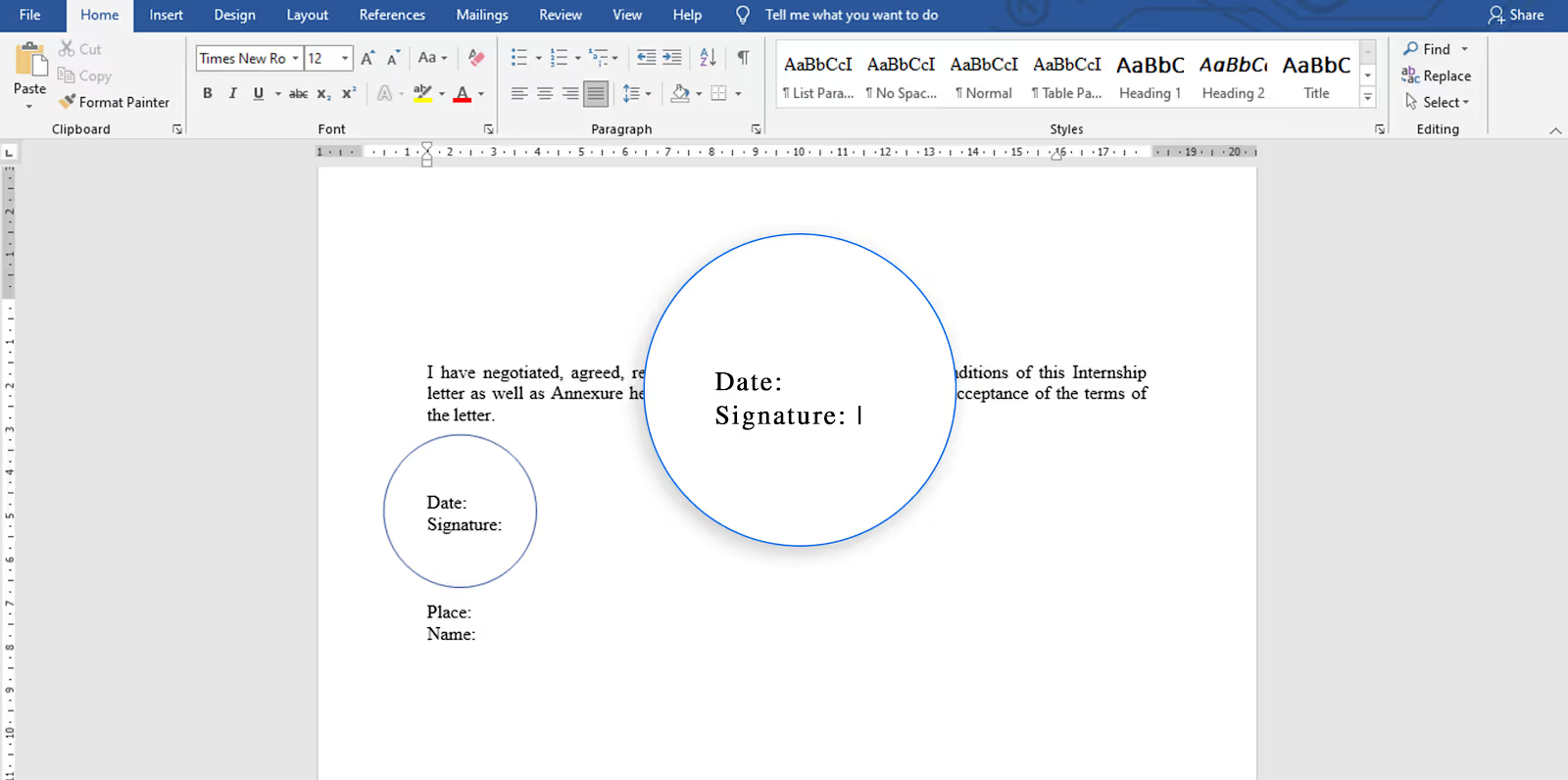
- Go to the Insert tab, under the Text group, click on the Signature Line list and then on Microsoft office signature line.

- You will see a Signature setup dialog box to enter details such as the suggested signer, title, email address, and other instructions.
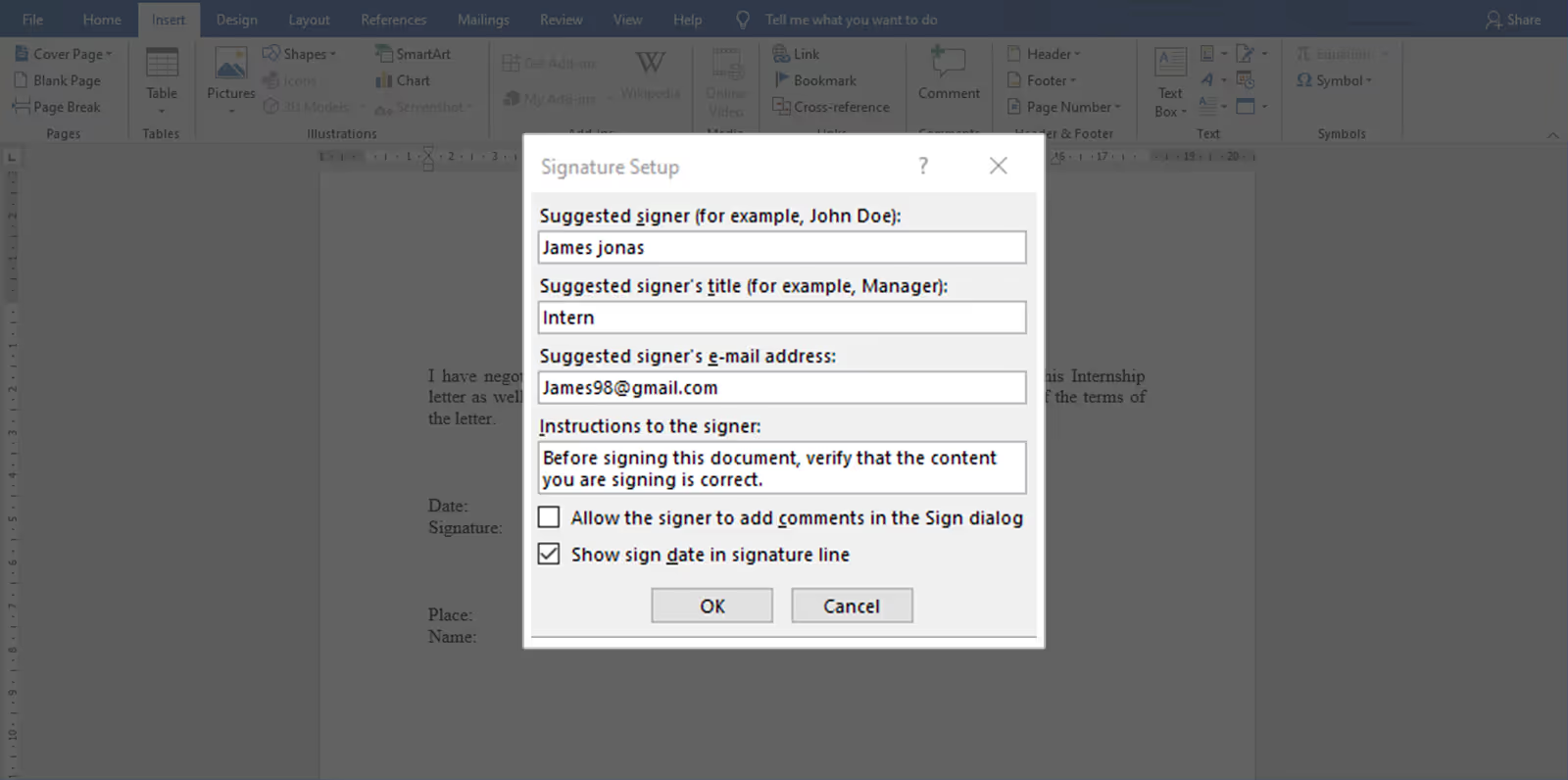
- Now right-click on the document’s signature line and from the menu select Sign. Then select the image of the previously saved signature you wish to add. Alternatively, you can handwrite your signature if using a touch screen desktop or type a printed version of your name directly into the signature box.
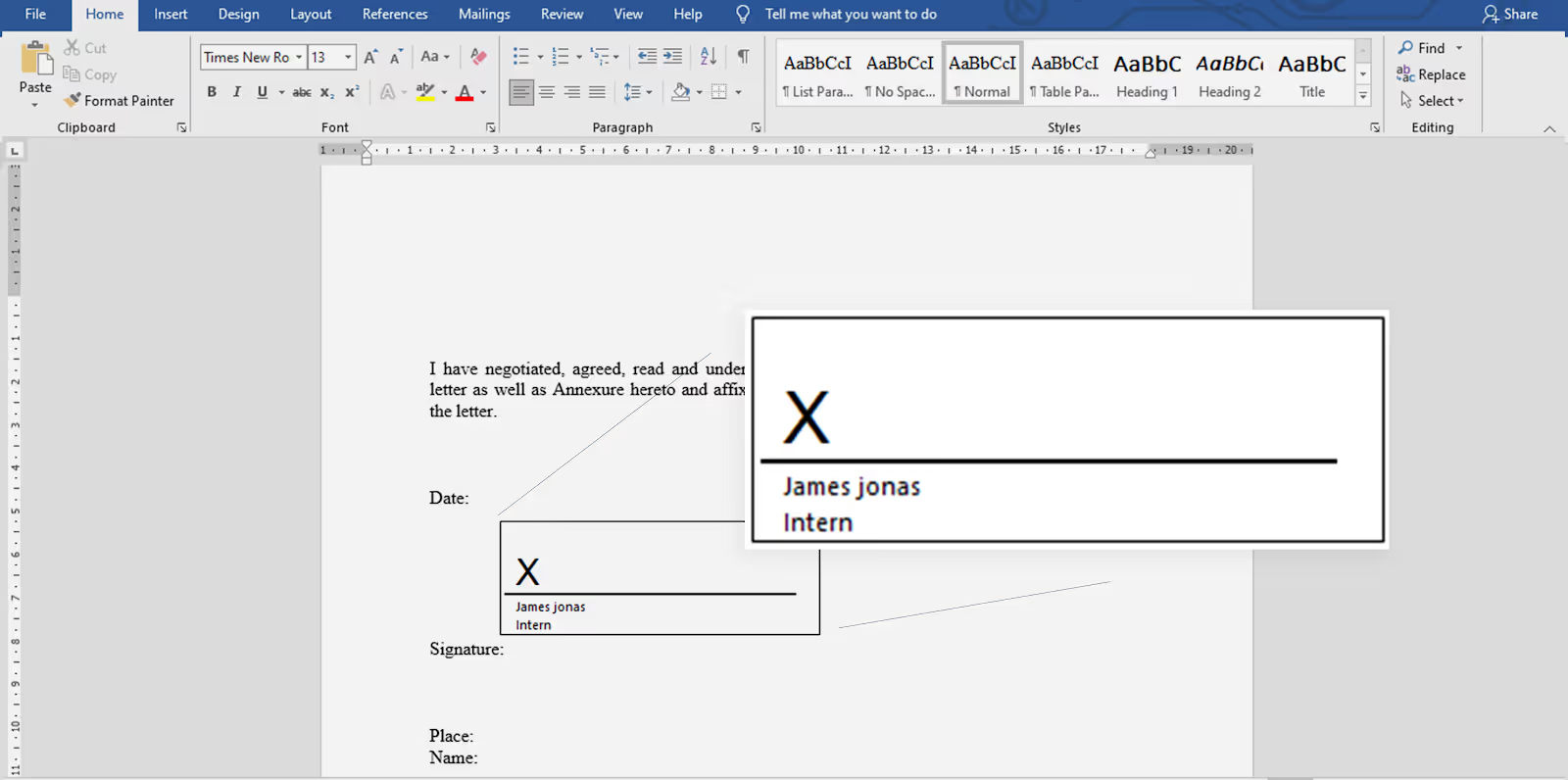
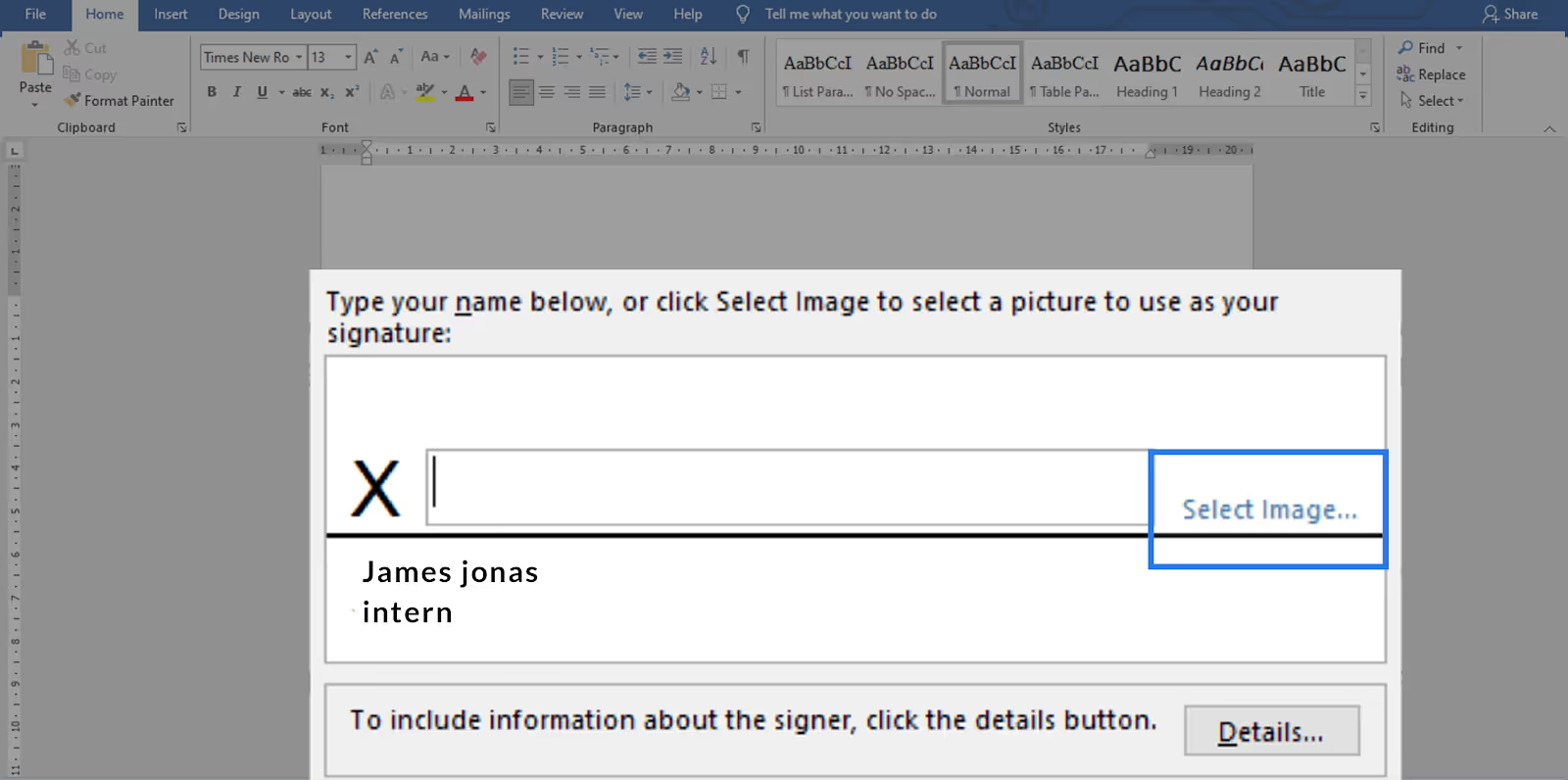

What are the drawbacks of creating e-signatures on MS Word?
Although it might seem easy to create electronic signatures in Microsoft Word to those who are familiar with the application and regularly using it to process documents, there are certain limitations with this tool. Here are some of the primary concerns:
- Complicated e-sign setup: In a document where many signatures are needed, every recipient will have to download the document, open it using the MS Word app, and follow the instructions listed above to complete their digital signature.
- Back and forth document handling: MS Word is not a designated signature solution so if the creator crafts, signs, and sends the document to dozens of recipients, each will need to read the file, determine their interest, add their signatures, and then send it back to the originator.
- Lack of active notification: Whenever you send the document to an individual signer, there will be no visibility. You will not be able to see how they have interacted with the message and document or when they add a signature. Without active notifications, your salespeople will be stuck in limbo anxiously wondering if their commission is going to fall through.
- Longer sales cycle: As an MSP, your sales teams are already juggling numerous activities. Between lead follow-ups, working out pricing details, and drafting proposals, imagine the drudgery of crafting e-signatures on top of all those painstaking responsibilities?
- Sales delay: Many customers solely rely on Microsoft Word, and for them, a handy solution for adding quick e-signatures, approving business documents and closing sales will still be a hassle. The sequence of steps involved in crafting and adding their autograph to documents will make it a long and complicated process.
What if you could get all the benefits of an e-signature without any of the hassles?
Due to these reasons, we built Zomentum platform with an integrated legally-binding e-signature capability.
With active notifications, your salespeople can confidently move on to their next pitch, with timely alerts notifying them of updates with other ongoing deals. They can set timelines on documents to instil urgency for faster sales closure. Sending the document as a microsite with an easy drag and drop feature allows sales team members to clarify objections in real-time, gain speedier approval, and accelerate sales cycles.
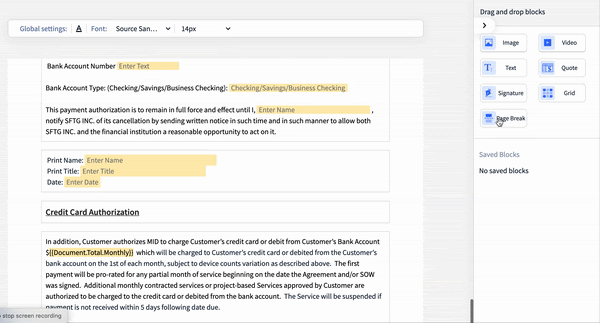
Once they email recipients, they automatically receive updates with real-time notifications that help them stay on top of document statuses at all times. Here’s a quick read on how digital signatures can make proposals more efficiently and help close deals faster.
If you’re interested in accelerating sales cycles and growing your MSP, contact one of our experts today. Book your free demo now!





.png)









